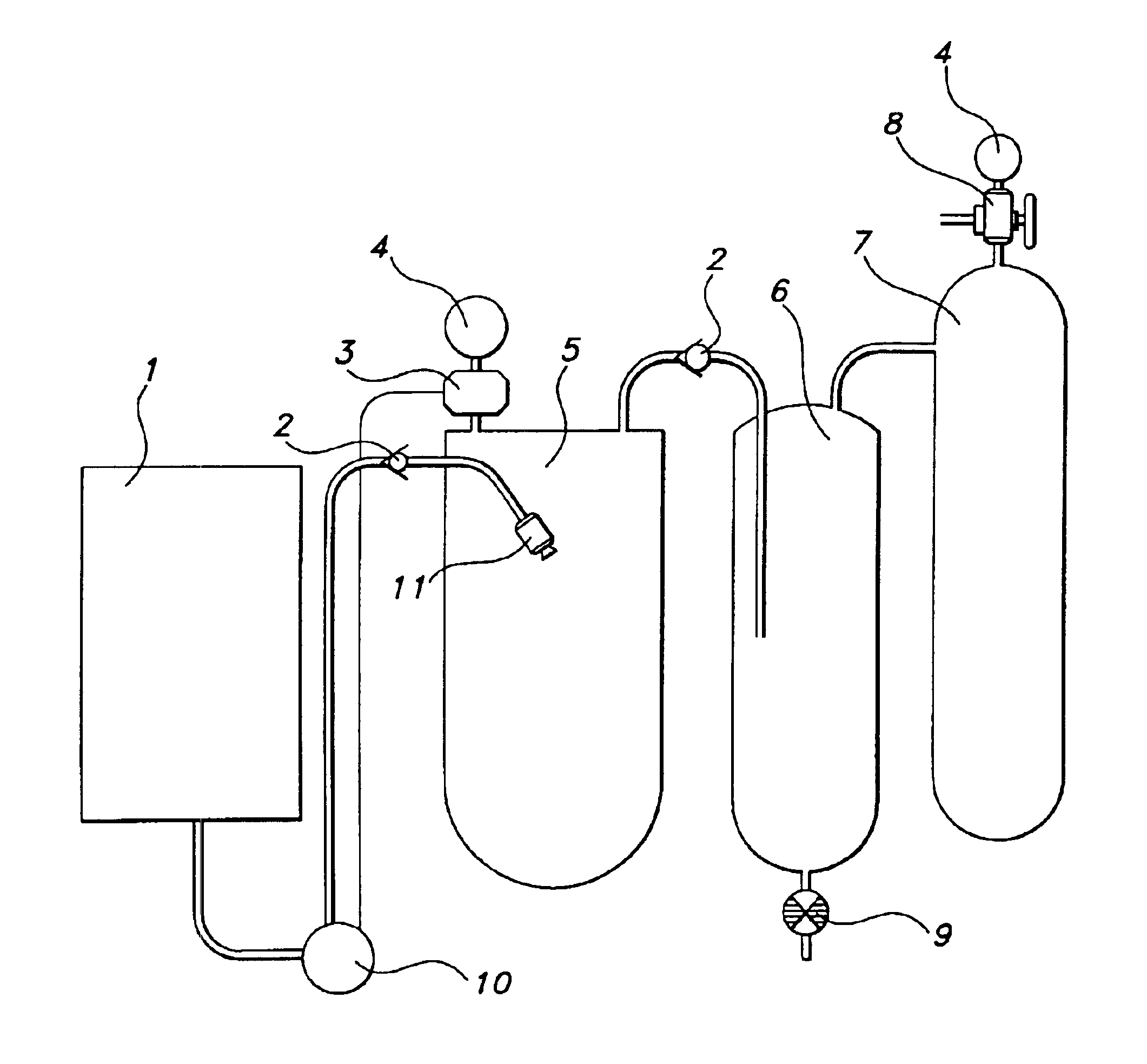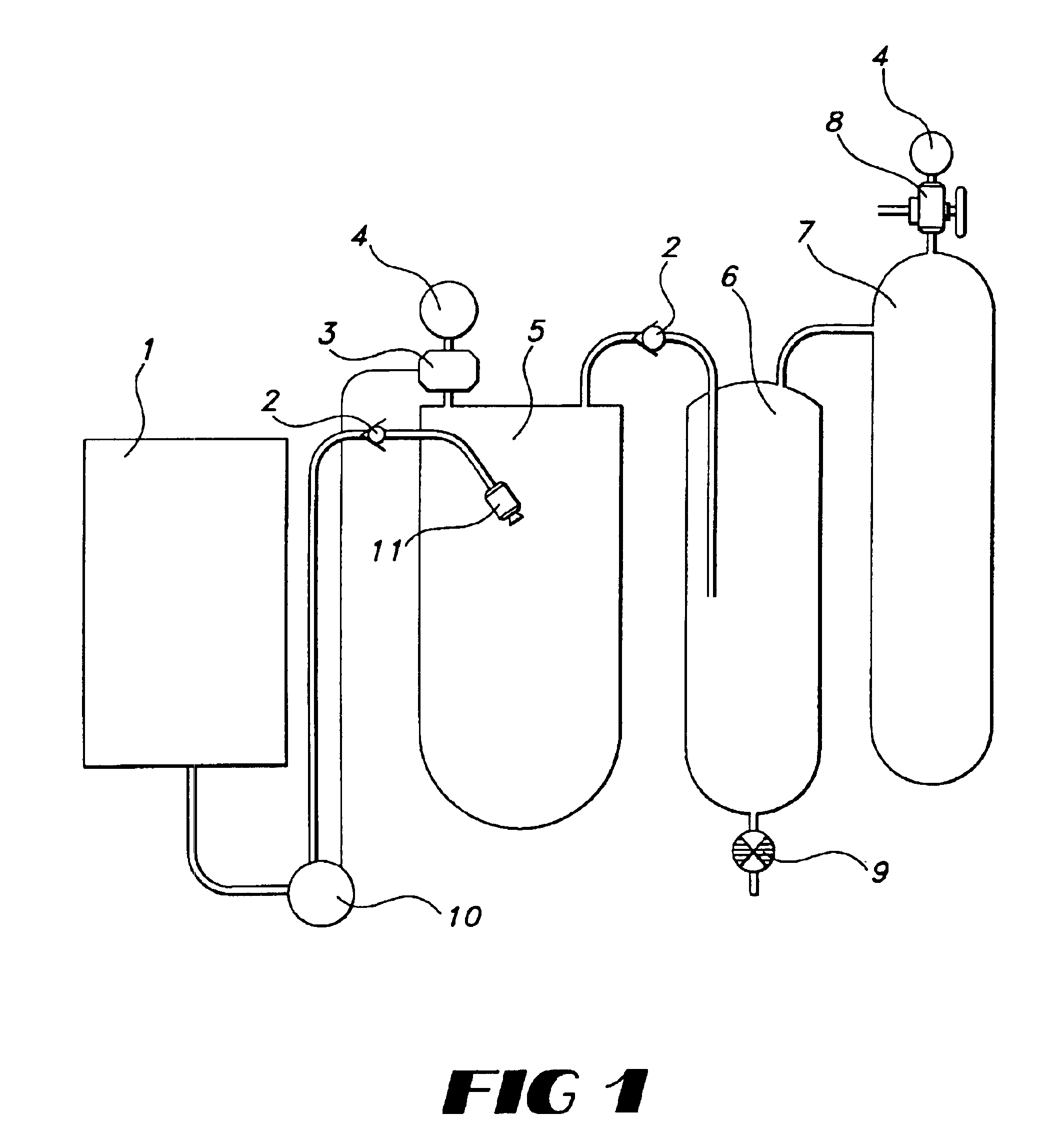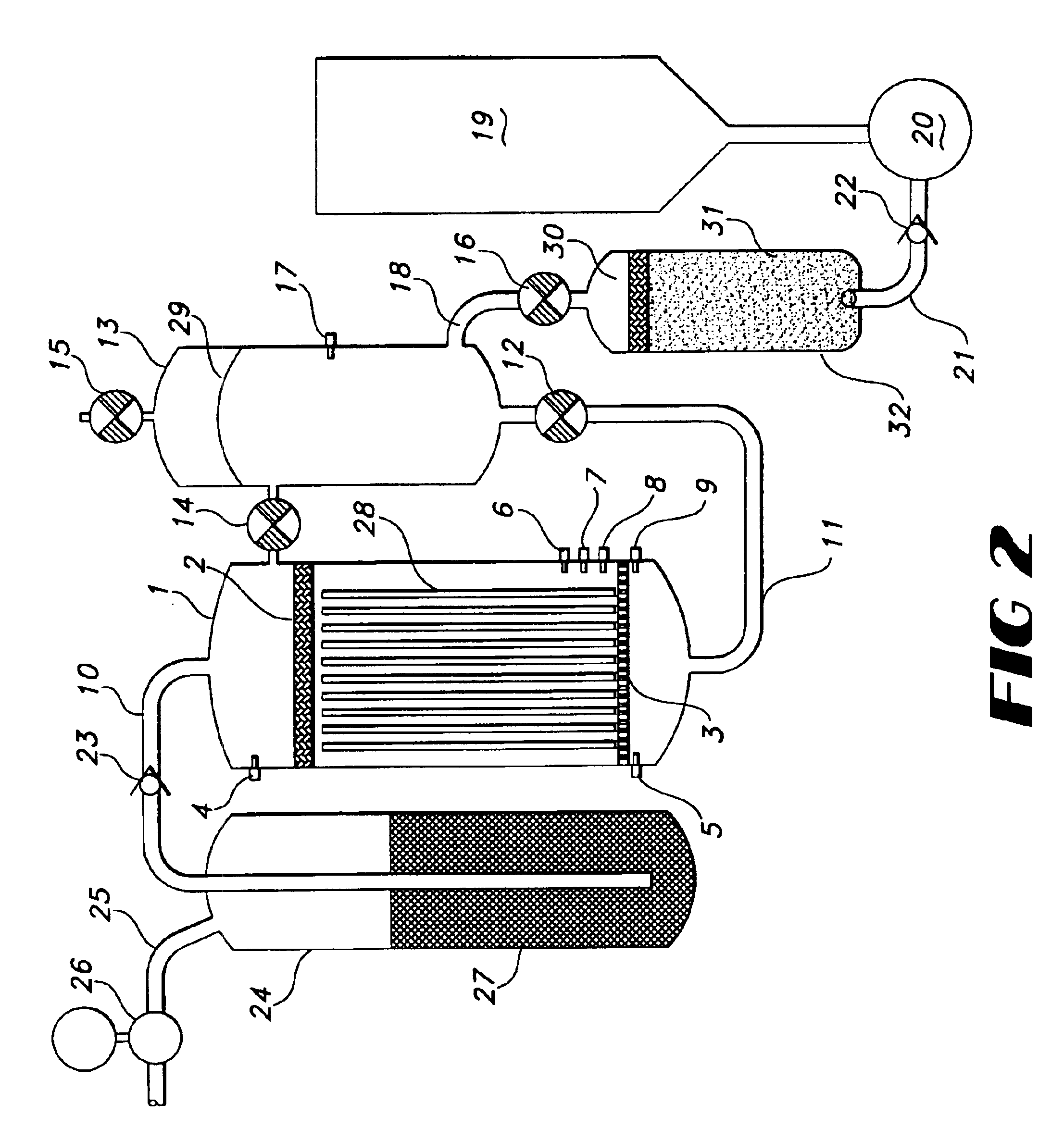Method for controlled generation of hydrogen by dissociation of water
a technology of dissociation and hydrogen gas, applied in the direction of fluid pressure control, process and machine control, instruments, etc., can solve the problems of generated hydrogen exploding, generating significant heat, and typically rapid and intense reaction
- Summary
- Abstract
- Description
- Claims
- Application Information
AI Technical Summary
Benefits of technology
Problems solved by technology
Method used
Image
Examples
Embodiment Construction
[0033]The method and apparatus of the invention can be used with a wide variety of different aqueous liquids, including aqueous solutions of bases, such as alkali metal hydroxides, aqueous solutions of mineral acids, such as sulfuric or hydro-halide acids, and water, provided that the aqueous liquid is capable of reacting with the selected dissociation initiating material to dissociate water in the aqueous liquid. The concentration of the base or acid is substantially variable, and can range from very dilute solutions to very concentrated solutions. Generally, the concentration ranges from about 0.1 M to about 10 M, more particularly from about 4 M to about 10 M for, e.g., aqueous sodium hydroxide. Examples of suitable dissociation initiating materials include aluminum, alloys of sodium and aluminum (such as those described in U.S. patent application Ser. No. 09 / 885,776, filed Jun. 19, 2001, the entire contents of which is hereby incorporated by reference), iron, zinc, sodium, alkal...
PUM
| Property | Measurement | Unit |
|---|---|---|
| pressure | aaaaa | aaaaa |
| pressure | aaaaa | aaaaa |
| temperature | aaaaa | aaaaa |
Abstract
Description
Claims
Application Information
 Login to View More
Login to View More - R&D
- Intellectual Property
- Life Sciences
- Materials
- Tech Scout
- Unparalleled Data Quality
- Higher Quality Content
- 60% Fewer Hallucinations
Browse by: Latest US Patents, China's latest patents, Technical Efficacy Thesaurus, Application Domain, Technology Topic, Popular Technical Reports.
© 2025 PatSnap. All rights reserved.Legal|Privacy policy|Modern Slavery Act Transparency Statement|Sitemap|About US| Contact US: help@patsnap.com



